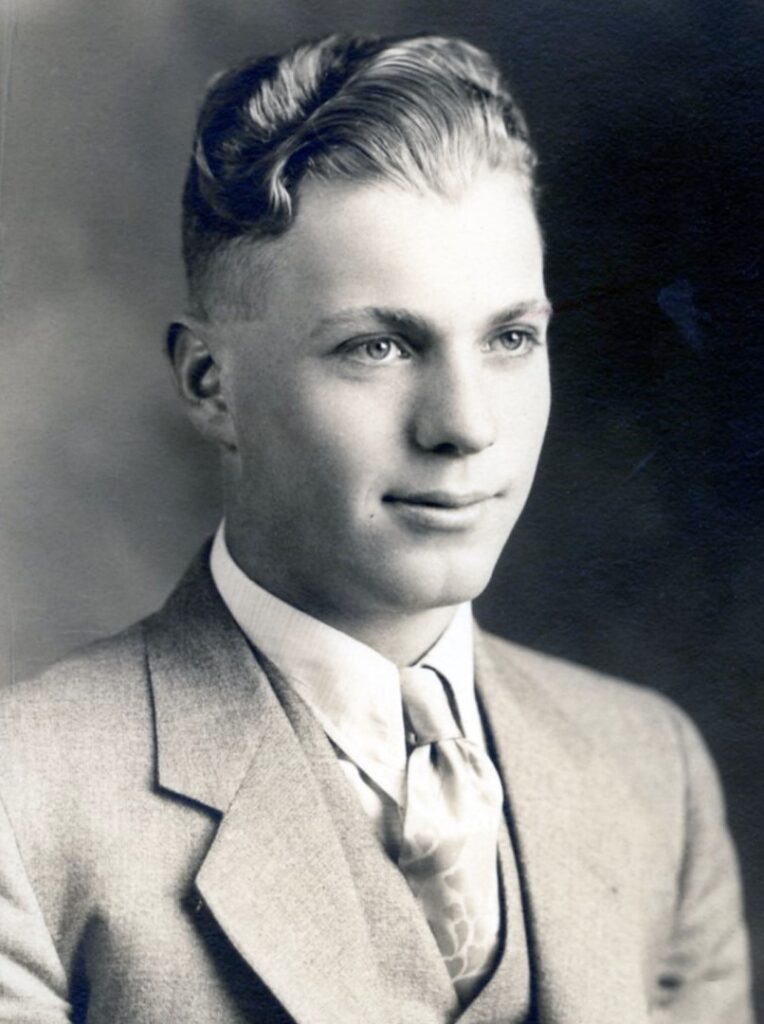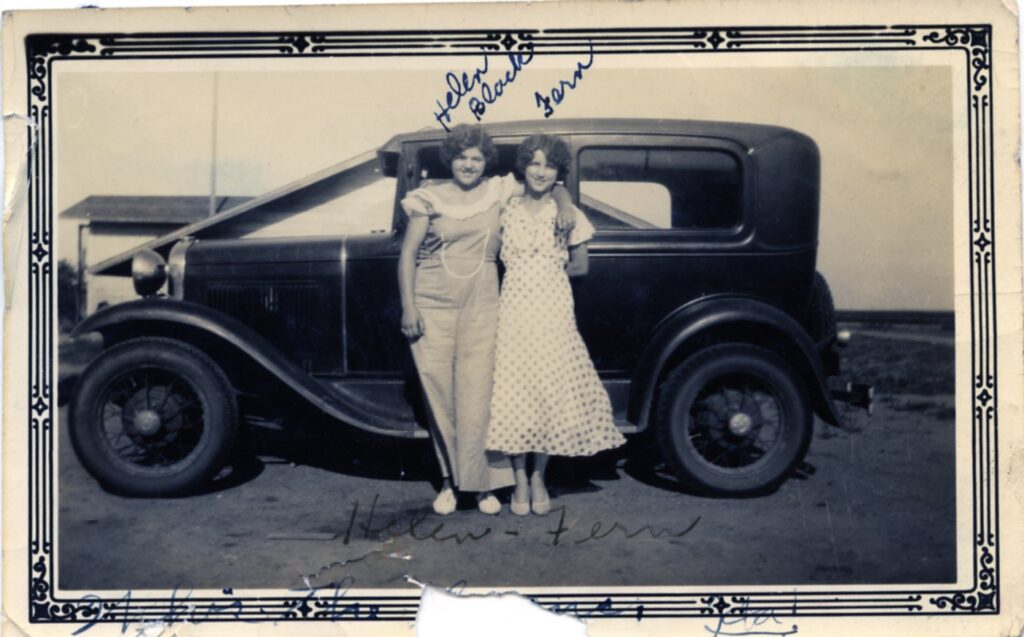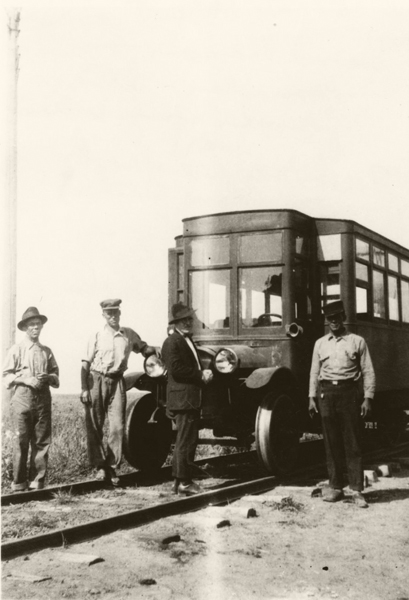Alarm clocks will be going off next week to get the kids up and back to school. It’s hard to imagine, but over the years, Edwards County has had 52 public and 4 parochial schools. Many rural students had to walk to school. We’ve all heard those stories that begin “I walked five miles in a blizzard to get to school.”
This week I looked through our archive of oral histories, some books, and talked to a few “old timers” to reveal how rural kids used to get to school.
Earl McBride (1915-2011) went to the Wendell School through 8th grade. Wendell was located south of Centerview at 150th Ave and V Rd. He should have gone to Centerview High School, but both he and his dad wanted him to play football, so he went to Greensburg High School instead from 1929-1933.

“I started driving back and forth down there which was 12 miles,” Earl said. “I drove for about 6 weeks in a Model T Ford. Then Dad traded for a 1929 Model A, and I drove that all the time I was in high school.”

His daughter Bonita McBride and I think it must have really been something at that time for him to drive a brand new car to school.
When Jerry Anderson was in 1st and 2nd grade, he and his older brother Jack lived a mile-and-a-half from Badger Hill School which was located north of Kinsley at 110 Ave. and C Rd. In a recent conversation, Jerry said that about half the time they walked and the other half they rode Patty, a small brown and white pinto horse.
“We rode together bareback and when we got to school, we tied Patty in a coal shed. There were two stalls in that shed. She stayed there all day while we were in school. If the weather was really bad, then we were driven to school in the Model A truck.”
Bill Olsen, who lives on the southeast corner of Logan Township, said is his oral history,
“We’d get up in the morning, when I was six years old, we’d go out early in the morning and milk cows. We’d separate milk…. We’d come in and always have a healthy breakfast. Eggs, bacon, fried potatoes. Then we’d get on a horse or a bicycle and ride two miles to school in Nettleton…. They had a barn. We’d put the horse in the barn….” Nettleton was located on the Pawnee County line and Hwy 183.
Bill went on to say, “We weren’t supposed (to race). My brother Gene was in the 8th grade when I was in the 1st grade. I don’t know where he got it, but he got a buggy. He painted it with red wheels and a black body, and I’d better not tell you what we put on the side of it. He painted on the side of it, Stripe-ped Assed Ape.” That’s like him, Gene was kind of a rowdy person. I don’t know how many days we went to school, finally, coming home from school, he wanted to see how fast he could take that corner down there a mile south. Well, he took it all right, and all three of us ended up out there in the field with the buggy upside down. It never hurt any of us; we picked the buggy up, got in and away we went home.”
I had never heard the phrase “stripe-ped assed aped” before. I looked it up and found it was commonly used for something running or going at a higher speed than expected.
Beginning in 1917, students who lived along the parallel often rode the jitney to get to school. The locals called this made-over trolley car the Doodlebug. It operated on the Anthony & Northern (commonly called the Aunt Nancy) railroad tracks which ran just over 100 miles from by the Kinsley High School, south thru Charlet, and then east thru Centerview, Fellsburg, Trousdale, Hopewell, Byers, Strickler, Iuka, and ended in Pratt. The whole trip took 2 ½ hours.

According to Myrtle Richardson’s book, The Great Next Year Country, “The jitney was considered somewhat of a joke…the first one was a make-shift affair. Once in a while when the load was light, if the operator drove too fast, the jitney would jump the track. It would be necessary to jack up the wheels which had gotten out of line, and swing them back onto the track. Often passengers were pressed into service to help.”
Ted Taylor wrote in an article in the Kinsley Graphic that “Lacking a steam whistle, these altered motor cars relied on their battery-operated horns to warn unwary cows, coyotes, jack rabbits, motorists and pedestrians of their approach.”
In a library interview with Fadonna Anderson (1908-2005) she stated, “I attended a 2-room grade school in Charlet, and later rode to high school in Fellsburg on the jitney
One time, according to the Dec. 15, 1921 Graphic, “The Centerview pupils (who also attended Fellsburg High School) were absent Monday, but it was not the fault of the weather. The jitney broke down and had to wait a couple of days for a new engine. Most of the students got in Monday evening and stayed in Fellsburg until the jitney began its regular schedule Thursday evening.” I wonder if local families took them in that week?
Ted Taylor attended Centerview High School before graduating from Kinsley High School in 1946. He remembers that “The daughters of C. L. Howell lived at the Hodges station on the road now known as 183 Highway. The girls rode the jitney to Centerview each morning to high school and returned home on the jitney each evening. They left school a few minutes early in order to catch their ride home.”
Later gas-powered cars were used on the tracks as backup vehicles. Jim Mathes (1934-2007) recalled in Ted Taylor’s September 11, 1997 Graphic article that “I rode in a converted 1937 four-door sedan. The mail was put on the front seat with the driver, passengers were in the next seat and cream cans in the trunk.”
The astute reader will notice that I have not mentioned the common school bus in this article. They will be the subject next week in part 2.
